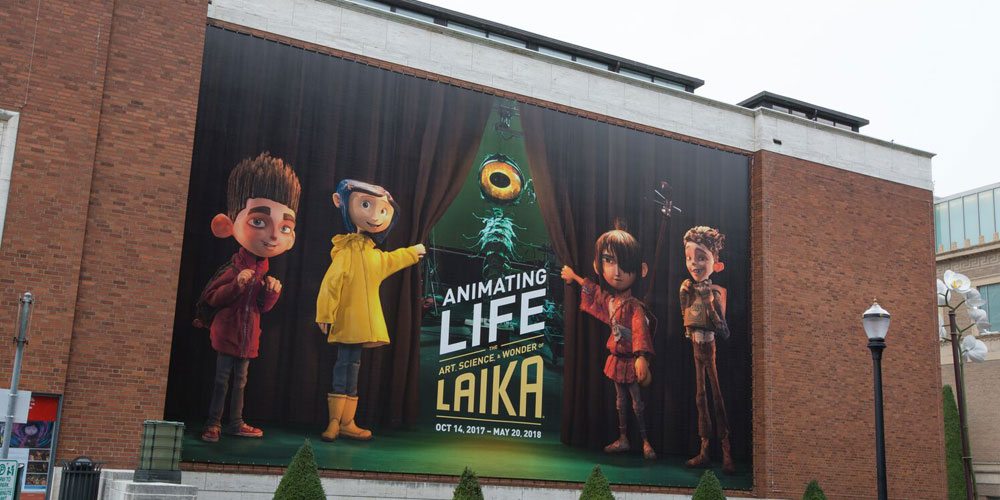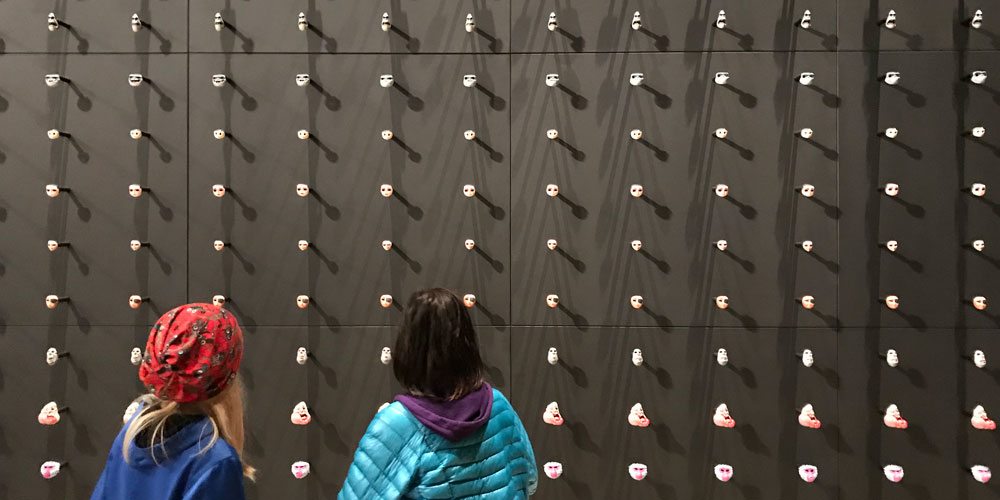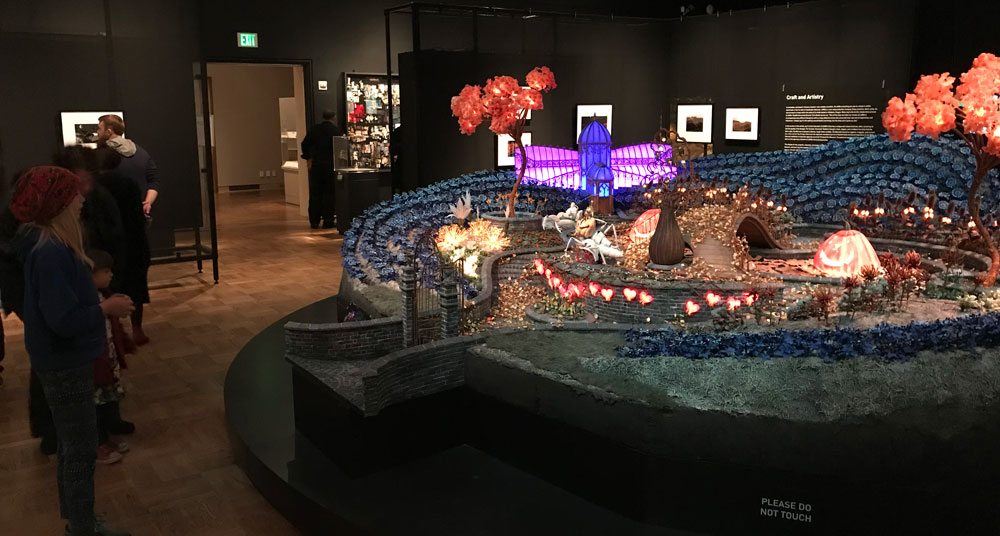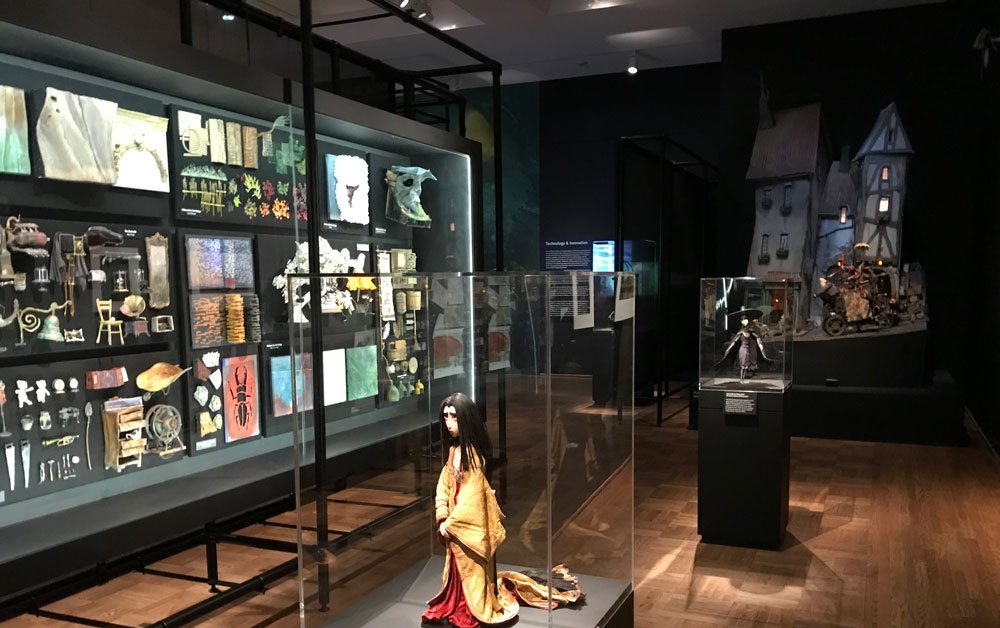
I’ve always been a huge fan of stop-motion animation. I love the way that LAIKA combines traditional techniques with modern technology to bring their amazing worlds to life in films like ParaNorman and Kubo and the Two Strings. The Portland Art Museum currently has a special exhibit (until May 20, 2018) called Animating Life: The Art, Science, and Wonder of LAIKA that gives you an up close look at the making of their four feature films.
I was invited to bring my family to check out the exhibit, which takes up three rooms in the front of the museum. The first thing you see, out in the lobby area, is the “other world” house from Coraline, a huge pink structure. It’s amazing just to walk around it and admire the details on it. I’ve been lucky enough to visit LAIKA’s studios twice, once for The Boxtrolls and once for Kubo, and I’m thrilled that this exhibit allows a wider audience to see some of the behind-the-scenes magic.

As you walk into the exhibit hall, the first thing you see is the giant skeleton from Kubo and the Two Strings, which towers over you. It’s a really impressive sight. When they were shooting the film, the skeleton wasn’t actually fully assembled. The top half of the skeleton sat on a hexapod, and then the legs were animated separately—because you don’t really see the full skeleton in the film, and it was too tall for the studio anyway.

The other thing in the front hall is a huge wall of 3D-printed faces from the films. As you may know, stop-motion animation has often used replacement heads to animate faces for dialogue and expressions. LAIKA pioneered the use of 3D printers, making it possible for the characters to have even more subtle expressions. The entire wall next to the giant skeleton is filled with row after row of these faces, which are just a fraction of the total number used in the films.

Off to one side of the entrance hall, there’s a screening room set up with several couches, and there’s a video playing that explores various aspects of stop-motion animation: puppet-making, special effects, rigging, costumes, and more. The video is made up of short segments and is on a loop, so you can drop in at any point and just watch until you’ve looped back to where you’ve started. One segment showed the making of a lamp from ParaNorman from start to finish, which was amazing—particularly when they showed the scene from the film and you realized that it’s just one of many lighting fixtures in just a single scene. My oldest daughter was particularly enchanted with the clips that showed how props, puppets, and costumes were made—maybe she has a future in stop-motion?

The rest of the exhibit takes up one gallery room, with various display cases surrounding the other world garden from Coraline, which serves as a huge centerpiece. There are displays from each of the four films. You’ll see how puppets are assembled, how props are created, and what goes into the design and creation of the tiny costumes. You’ll get close-up looks at a few of the sets, like buildings from ParaNorman and The Boxtrolls, and the interior of Kubo’s house.

What’s on display here represents just a tiny fraction of the massive undertaking involved in a stop-motion film, and it’s fascinating to see. LAIKA pushes the boundaries of what they can achieve with each new film, and so you can also see how they have advanced from film to film.

One example of this is the giant eyestalk from Kubo. I think until you see it in person you don’t realize how huge it really was, despite the fact that it’s large on-screen. The eyeball itself was controlled with a giant trackball (seen to the right in the photo) that they created using a bowling ball and some optical mice.
There’s more to see than what I’ve shown you here, of course, so if you’re a fan of LAIKA’s films, it’s definitely worth a visit! For more information about the exhibit, visit the Portland Art Museum website.

